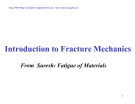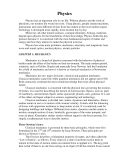
Modern materials science
-
Geography can be described as a field of science which is the study of the Earth’s physical features, people, as well as the relationships between people and their environment. Based on collecting and analyzing materials from various sources, the paper analyze the characteristics of major branches in the new trend of geography. In addition, as a basis for the above analysis, we also outline the history of geography and present the traditional and modern methods in geographical research.
 10p
10p  tieuthi3006
tieuthi3006
 16-03-2018
16-03-2018
 45
45
 0
0
 Download
Download
-
Mechanical engineering is a discipline of engineering that applies the principles of physics and materials science for analysis, design, manufacturing, and maintenance of mechanical systems. It is the branch of engineering that involves the production and usage of heat and mechanical power for the design, production, and operation of machines and tools.[1] It is one of the oldest and broadest engineering disciplines.
 448p
448p  ngoctu239
ngoctu239
 27-11-2012
27-11-2012
 40
40
 3
3
 Download
Download
-
Fracture mechanics is the field of mechanics concerned with the study of the propagation of cracks in materials. It uses methods of analytical solid mechanics to calculate the driving force on a crack and those of experimental solid mechanics to characterize the material's resistance to fracture.In modern materials science, fracture mechanics is an important tool in improving the mechanical performance of materials and components.
 56p
56p  beobobeo
beobobeo
 01-08-2012
01-08-2012
 95
95
 13
13
 Download
Download
-
Physics has an important role in our life. Without physics and the work of physicists, our modern life would not exist. Using physics, people created machines, instruments and some different divices from the crudest to the most modern aspect. Techology is developed more rapidly, more modern day by day. Moreover, all other natural sciences- example chemistry, biology, medicinedepend upon physics for the foundations of their knowledge.
 17p
17p  tieulaubau
tieulaubau
 21-06-2011
21-06-2011
 85
85
 5
5
 Download
Download
-
Harrison's Internal Medicine Chapter 69. Tissue Engineering Tissue Engineering: Introduction The origins of tissue engineering date to the sixteenth century when complex skin flaps were used to replace the nose. Modern tissue engineering combines the disciplines of materials sciences and life sciences to replace a diseased or damaged organ with a living, functional substitute. The most common tissue engineering approach combines cells and matrices to produce a living structure (Fig. 69-1).
 5p
5p  konheokonmummim
konheokonmummim
 03-12-2010
03-12-2010
 79
79
 7
7
 Download
Download
CHỦ ĐỀ BẠN MUỐN TÌM

















